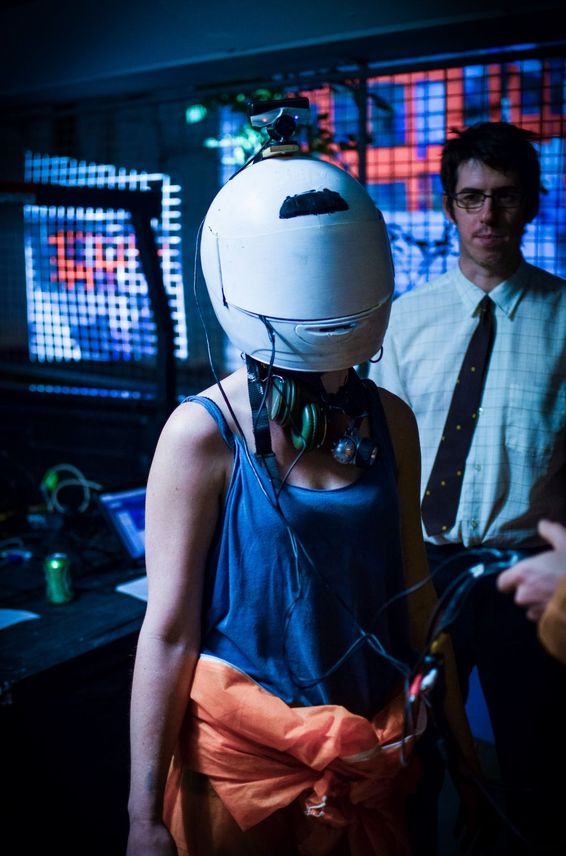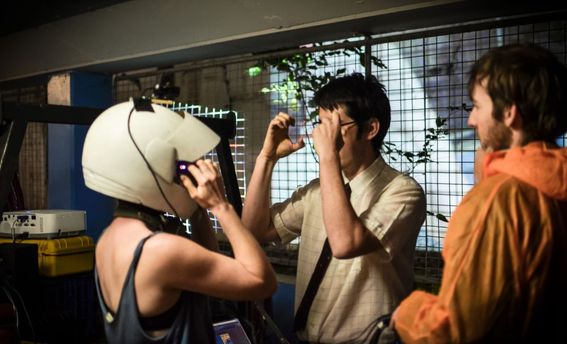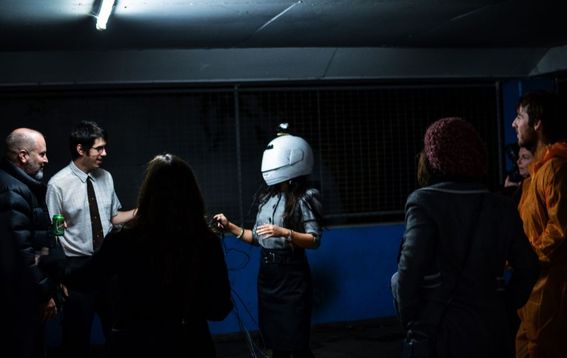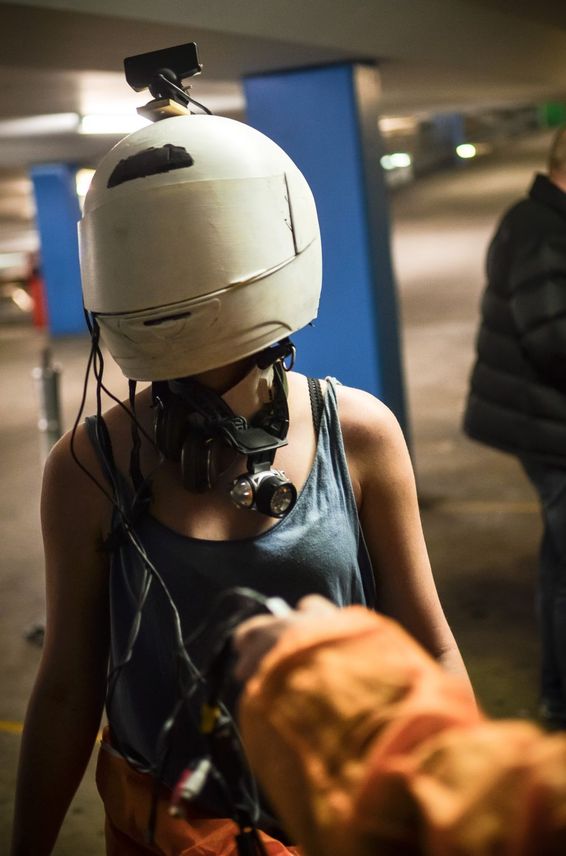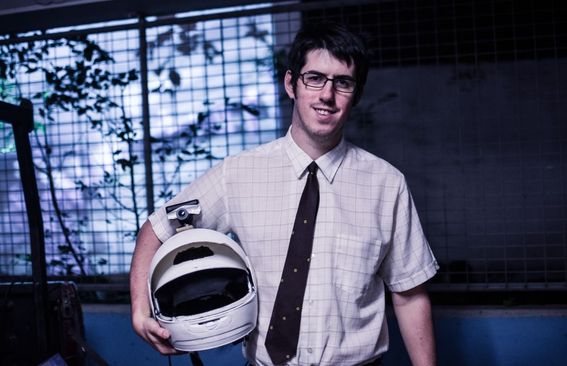Realnaut is a new independent artwork I’m creating. I presented a first-draft version at the inaugural Rapid Prototype event, held at Alaska Projects in the Kings Cross Car Park, 28th August 2012. Realnaut explores the idea of live editing reality.
It consists of a helmet worn by members of the public. The helmet contains a head mounted display. On top of the helmet is a camera.The camera view is processed by a computer before being fed back to the helmet. A projector shows bystanders what is happening.
In the first draft of Realnaut I used facial recognition to find and erase the face of anyone in the viewing port of the camera. Equally the wearer of the helmet had their own face obscured to viewers outside. You also can’t hear very well with the helmet. This forced removal of human interaction was intended to turn the wearer into the equivalent of an alien explorer of the real world. Or at least that was the idea I sketched out. I was aiming to make some kind of statement about the ownership of faces in the digital world with systems like trapwire coming online.
This was somewhat successful however people responded most just to the idea of exploring their own world through a digital eye. The head mounted camera is a natural way to explore the environment. The helmet shuts out peripheral vision and forces you to use the display to navigate. The camera lens is fairly white and slightly fisheye, giving people a wider view than they normally have but one that requires increased thought to process and navigate. Simple tweaks like flipping the image or turning the camera backwards were also popular and proved engaging.
On the other hand the discussion was mostly around the potential of augmented reality type applications with this system. People often talked up the idea of creating video games in real spaces. There are a lot of possibilities At this point I don’t want to limit it. I think I’ll experiment further with versions that are distorted live cams, views that use augmented reality, and entirely virtual views.
One of the pragmatic motivations behind Realnaut is to create a roving experience that I can take to festivals without needing infrastructure like projectors and lighting systems. The Alaska project version still has several cables but there is no reason these can’t be eliminated in the long run. The laptop performing processing could be mounted on the wearers back and also allow bystanders to see the input.
All programming was done in vvvv. Special thanks to James Dalton and Lucy Parakhina for curating my work. Thanks to Legs on the Wall and Alaska Projects for hosting the whole thing!

